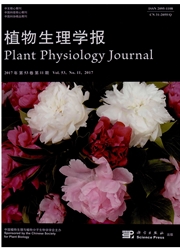

 中文摘要:
中文摘要:
水鬼蕉(Hymenocallis littoralis)花药发育中,脂滴的积累和分布具有明显的特点。在花药中部的造孢细胞中积累了很多脂滴。在形成胼胝质壁的小孢子母细胞中仍有大量脂滴的分布;与此同时,在花药壁绒毡层细胞中的脂滴也明显增加,而在其他药壁细胞中出现了少量淀粉粒。在四分体时期,四分体小孢子形态不规则,依然含有大量脂滴。在小孢子早期,形态不规则的小孢子开始形成花粉外壁,细胞质中的脂滴明显减少;绒毡层细胞外形变得不规则,内部仍含较多脂滴。在小孢子晚期,小孢子形成许多液泡,小孢子变为圆形,在花粉外壁内侧出现红色多糖成分;此时,绒毡层细胞降解,在退化细胞残迹中仍有较多脂滴。在二胞花粉早期,花粉粒中的液泡逐渐消失,脂滴数量又明显增加;而绒毡层细胞残迹变为很大的脂滴。水鬼蕉成熟花粉为二胞型,其中积累了大量的脂滴作为花粉储存物。
 英文摘要:
英文摘要:
The distribution of polysaccharides and lipids during the anther development of the Hymenocallis littoralis displayed some distinct features. A mass of lipids were accumulated in sporogenous cells. At microspore mother cell (MMC) stage, many lipids were still located in the MMCs which had formed a thick callose wall. At same time, lipids also increased in tapetal cells, but a few starches appeared in other cells of anther wall. After MMC meiosis, tetrad microspores were irregular and full of lipids. After released from tetrad, the irregular microspores began to form pollen wall. The lipids in the microspores decreased during the cell developing and forming many vacuoles, which made irregular microspores become round. In late microspore there were some polysaccharide materials appeared in the inner side of pollen wall. During the microspore stage tapetal cells degenerated, and the cell residue became many lipids. At early bicellular pollen stage, the vacuoles of the pollen disappeared and the lipid number increased evidently. The tapetal residue became massy lipid. The mature pollen of H.littoralis is bicellular and many lipids were accumulated in the oollen as a storage material.
 同期刊论文项目
同期刊论文项目
 同项目期刊论文
同项目期刊论文
 期刊信息
期刊信息
